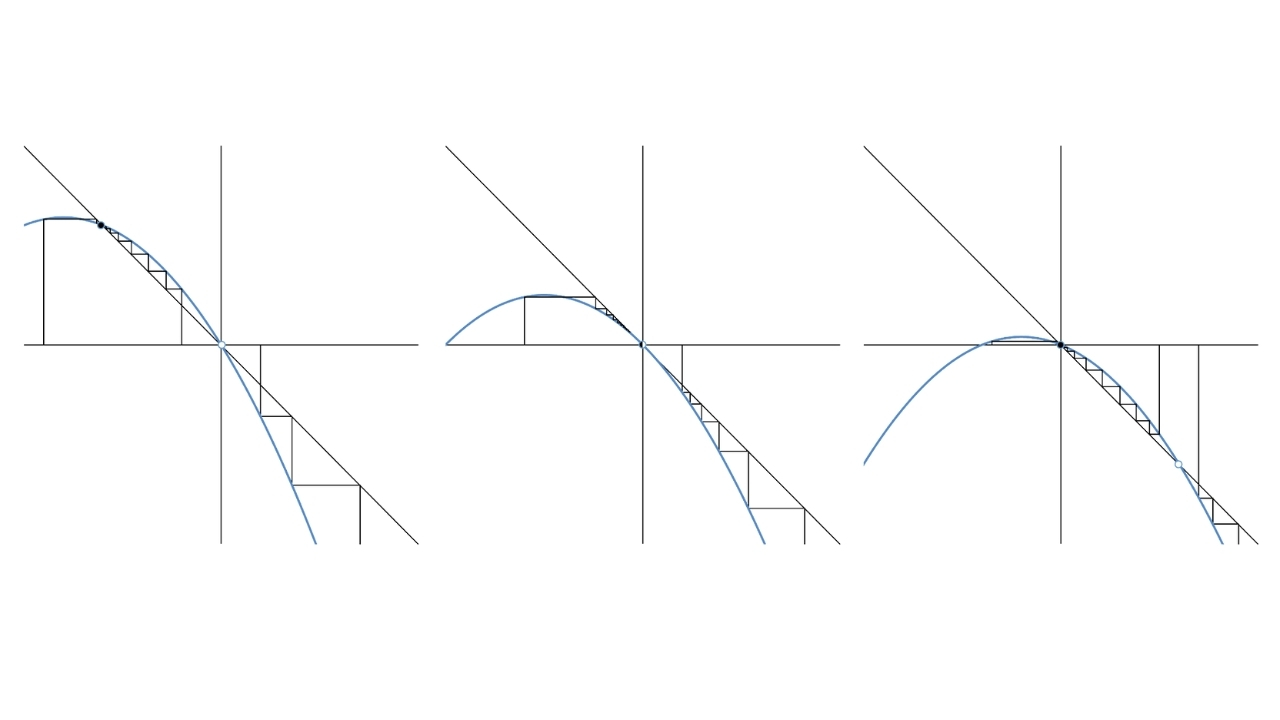
Transcritical bifurcation might sound like a complex term, but it's a fascinating concept in mathematics and science. What is transcritical bifurcation? Transcritical bifurcation is a type of bifurcation where two equilibrium points exchange their stability as a parameter changes. This phenomenon occurs in various fields, from ecology to engineering, and helps explain how systems transition from one state to another. Understanding this concept can shed light on how small changes in conditions can lead to significant shifts in behavior. Whether you're a student, a researcher, or just curious, these 26 facts will help you grasp the essentials of transcritical bifurcation and its real-world applications.
What is Transcritical Bifurcation?
Transcritical bifurcation is a fascinating concept in mathematics, particularly in the study of dynamical systems. It involves the exchange of stability between two fixed points as a parameter is varied. This phenomenon has significant implications in various fields, including physics, biology, and engineering.
- Transcritical bifurcation occurs when two fixed points exchange their stability as a parameter changes.
- The term "transcritical" comes from the Latin words "trans," meaning across, and "critical," referring to the critical point where the exchange happens.
- This type of bifurcation is often represented in a bifurcation diagram, showing how fixed points change with varying parameters.
Mathematical Representation
Understanding the mathematical representation of transcritical bifurcation helps in visualizing and analyzing the behavior of dynamical systems.
- The standard form of a transcritical bifurcation equation is ( dot{x} = rx – x^2 ), where ( r ) is the parameter.
- In this equation, ( x = 0 ) and ( x = r ) are the fixed points.
- When ( r ) is less than zero, ( x = 0 ) is stable, and ( x = r ) is unstable.
- As ( r ) becomes positive, the stability of these fixed points reverses.
Real-World Applications
Transcritical bifurcation isn't just a theoretical concept; it has practical applications in various scientific fields.
- In ecology, transcritical bifurcation can model population dynamics, showing how species interact and stabilize over time.
- Engineering systems use this concept to understand and predict system behavior under different conditions.
- Economics employs transcritical bifurcation to analyze market stability and the impact of varying economic parameters.
Stability Analysis
Stability analysis is crucial for understanding how systems behave near the bifurcation point.
- Linear stability analysis involves examining the eigenvalues of the Jacobian matrix at the fixed points.
- If the real part of the eigenvalue is negative, the fixed point is stable.
- Conversely, if the real part is positive, the fixed point is unstable.
- At the bifurcation point, the eigenvalue crosses zero, indicating a change in stability.
Examples in Nature
Nature provides numerous examples of transcritical bifurcation, illustrating its universal applicability.
- Predator-prey models often exhibit transcritical bifurcation, showing how predator and prey populations stabilize.
- Disease spread models use this concept to understand how diseases stabilize within a population.
- Chemical reactions can also display transcritical bifurcation, affecting reaction rates and stability.
Computational Tools
Modern computational tools make it easier to analyze and visualize transcritical bifurcation.
- Software like MATLAB and Python libraries provide functions to simulate and plot bifurcation diagrams.
- These tools help in performing numerical simulations to understand system behavior.
- Computational models can predict how systems respond to parameter changes, aiding in research and development.
Historical Context
The study of bifurcations has a rich history, contributing to the development of modern dynamical systems theory.
- The concept of bifurcation was first introduced by Henri Poincaré in the late 19th century.
- Andronov and Pontryagin further developed the theory in the early 20th century.
- The term "transcritical bifurcation" was coined later as the understanding of different bifurcation types expanded.
Challenges and Limitations
Despite its usefulness, transcritical bifurcation has limitations and challenges.
- Complex systems may exhibit multiple bifurcations, making analysis more difficult.
- Nonlinearities in real-world systems can complicate the prediction of bifurcation points.
- Parameter estimation is often challenging, requiring precise measurements and data analysis.
Final Thoughts on Transcritical Bifurcation
Transcritical bifurcation might sound complex, but breaking it down reveals its fascinating nature. This phenomenon occurs when two equilibrium points exchange their stability as a parameter changes. It's a key concept in dynamical systems, helping us understand how systems transition from one state to another. From engineering to biology, its applications are vast and impactful. Recognizing the signs of transcritical bifurcation can aid in predicting system behaviors, potentially preventing failures or optimizing performance.
Whether you're a student, researcher, or just curious, grasping this concept opens doors to deeper insights into how the world operates. Keep exploring, questioning, and learning. The more you dive into these topics, the more you'll appreciate the intricate dance of stability and change in various systems. Stay curious, and let your newfound knowledge guide you in your future endeavors.
Was this page helpful?
Our commitment to delivering trustworthy and engaging content is at the heart of what we do. Each fact on our site is contributed by real users like you, bringing a wealth of diverse insights and information. To ensure the highest standards of accuracy and reliability, our dedicated editors meticulously review each submission. This process guarantees that the facts we share are not only fascinating but also credible. Trust in our commitment to quality and authenticity as you explore and learn with us.
